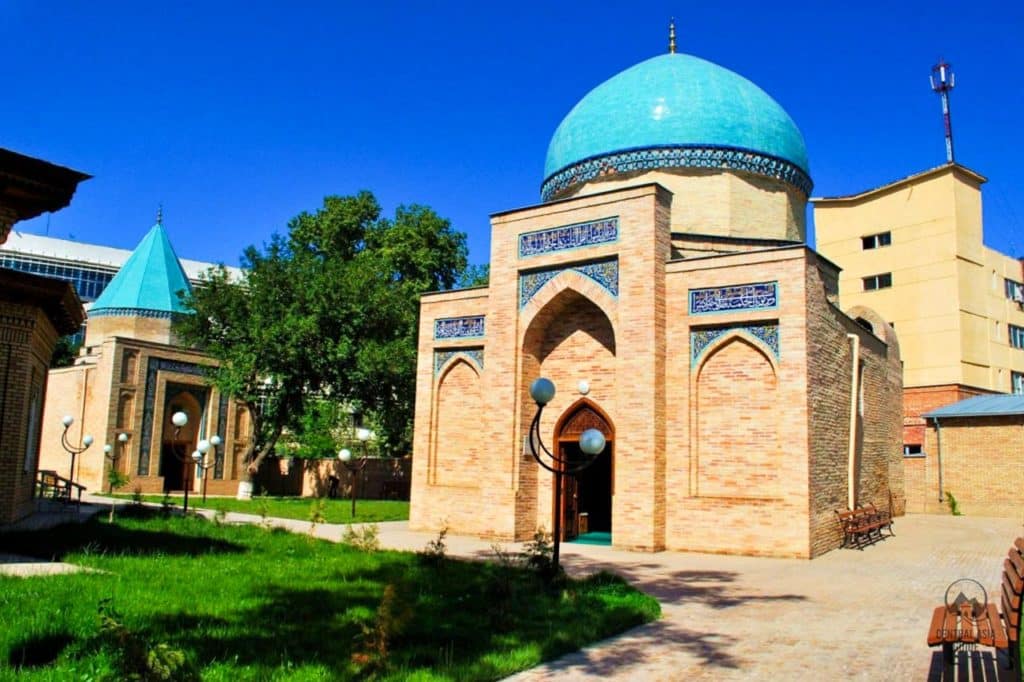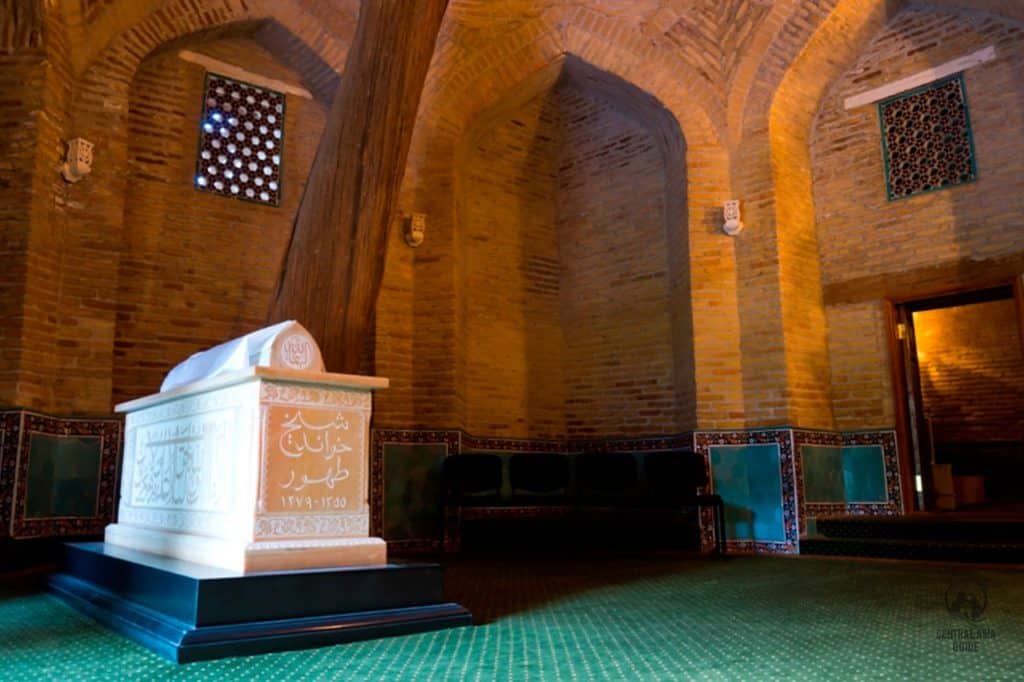Sheikhantaur Memorial Complex
Sheikhantaur Memorial Complex
Hidden in the area of Tashkent’s current Islamic University, between Abdullah Kadiri and Alisher Navoi Streets, are 3 mausoleums dating back to the 15th century. Only three of the original total of 16 monuments of the Shaihantaur ensemble have survived as the others were destroyed by earthquakes and Soviet planning. The three remaining are the only heirs of a Muslim complex of mosques and madrassas founded in the 14th century with the burial of the local saint Sheikh Khavandi Tahur, known as Sheikhantaur (or Shayhantaur).


Sheikhantaur Mausoleum
The first mausoleum of the complex belongs to Sheikhantaur himself who he was a local Sufi saint born in the late 13th century and is considered a descendant of the Rashidun Caliph Umar. He was admitted into the order of Khoja Ahmed Yasawi and grew to be a famous local holy man in Tashkent until his death around 1360. His tomb, though heavily restored, dates from around that time. The construction of mausoleum was ordered by Amir Timur himself, who also ordered the construction of the Yasawi mausoleum in Turkistan. The Sheikhantaur mausoleum was restored in the 19th century after it had suffered a lot from precipitation. Plainly described, the building is a small, brick-built structure with dark blue majolica tiles.
Kaldirgach Bey Mausoleum
The following mausoleum belongs to Kaldirgach Bey and was originally built for a ruler of Moghulistan in the early 15th century. The tomb is unique due to its turquoise roof which is dodecahedral (12-sided) on the outside but domed on the inside. The burial room has impressive carved wooden doors and deep alcoves decorated with stalactite-like carvings.
The mausoleum is of special significance for Kazakhs, as it is also the last resting place of Tole Bi, a revered wise judge and a defender of the Kazakh lands against foreign invasion. He ruled Tashkent in his final years and was buried here in the late 18th century. He was known as a Kaldirgach Bey, Karlygash Bi in the Kazakh language which translates as the swallow judge. Karlygash is a popular girl’s name in Kazakhstan even nowadays.
Yunus Khan Mausoleum
The largest mausoleum in the area is dedicated to Yunus Khan. This building with a rare T shaped khanaka with a high revak on top of the facade has been restored many times. Yunus was a descendent of Genghis Khan, grandfather of Babur and once the ruler of Tashkent and khan of Western Mogulistan. In 1485, he resolved a Timurid squabble by taking Tashkent for himself. After his death in 1487, his son built this two-story dome and portal memorial for him on top of an old Zoroastrian temple. Although you predominantly cannot go inside (it’s almost always locked), you can try to negotiate with guards to gain access. The Yunus Khan Mausoleum is best approached from the university’s north gate on Abdulla Kodiry Street.
Other sights of Tashkent
Page updated 10.5.2023